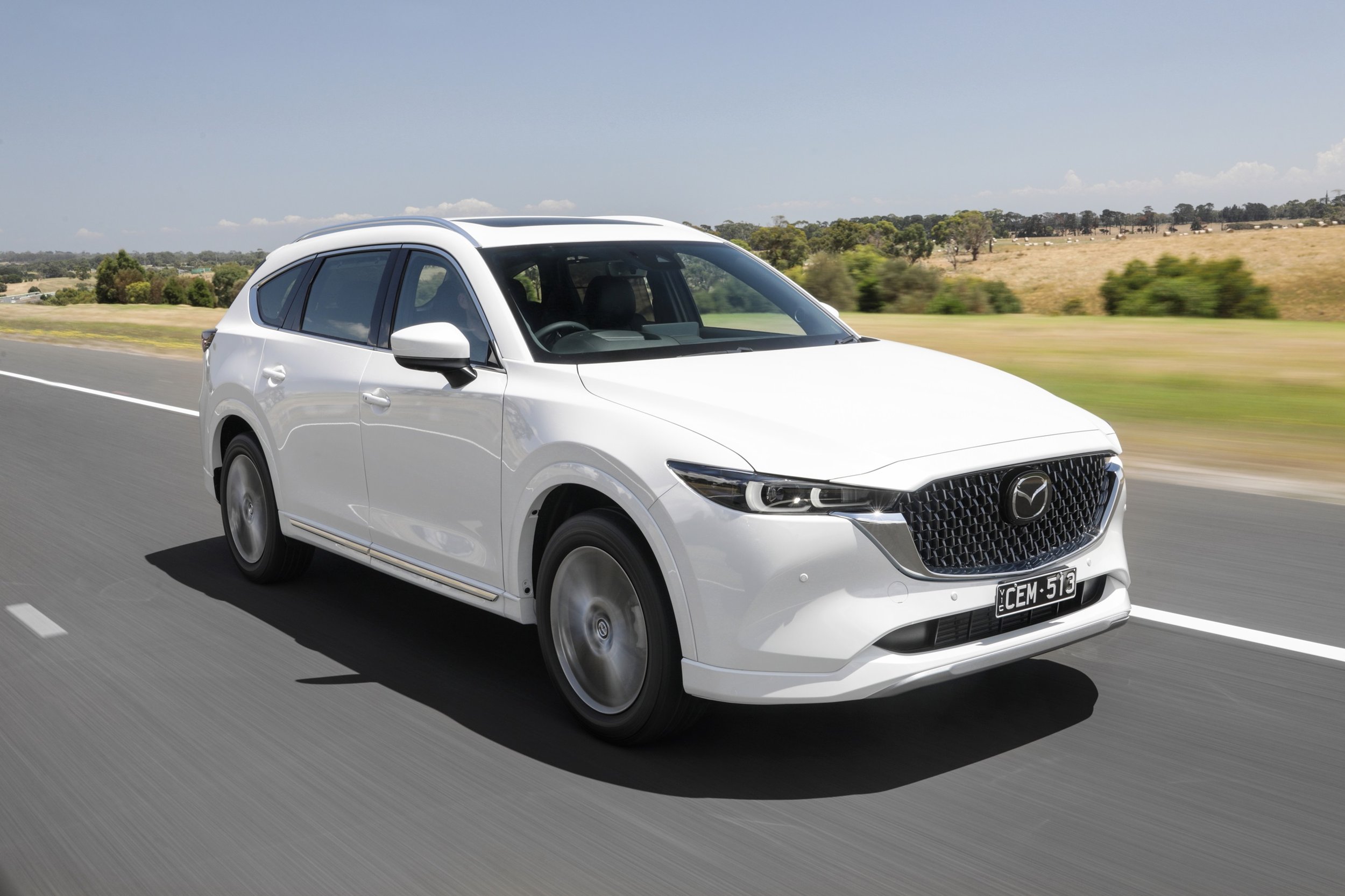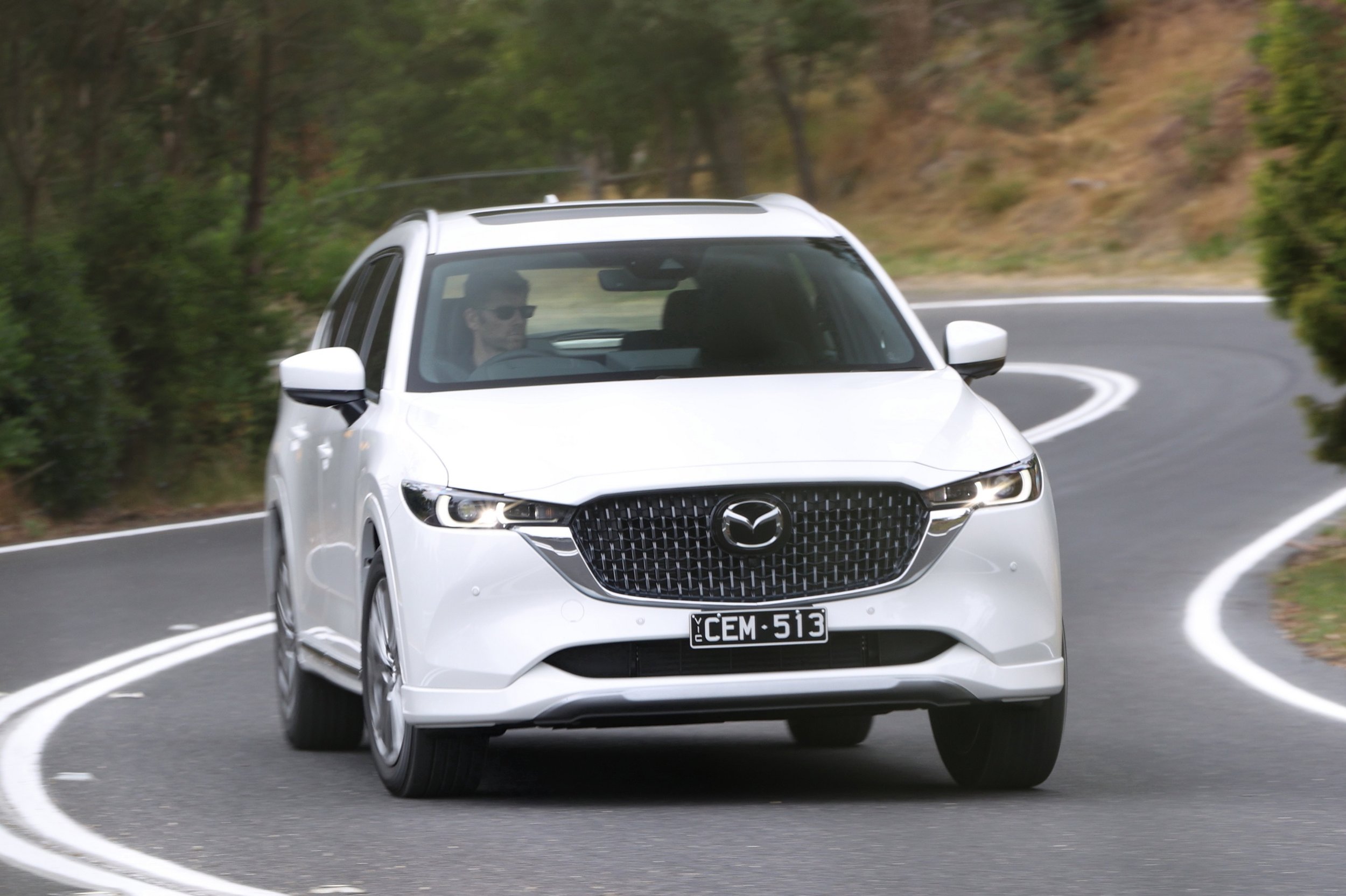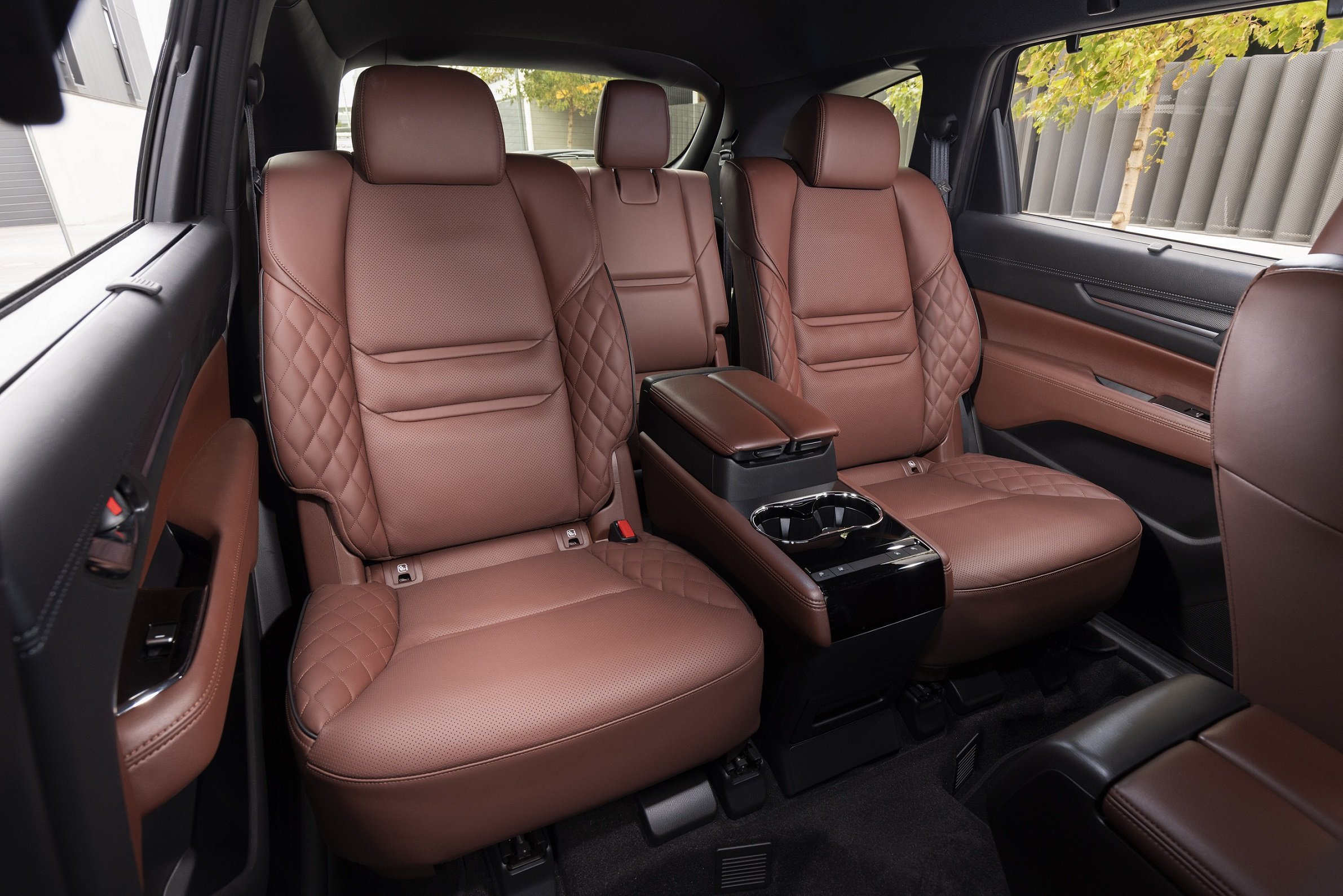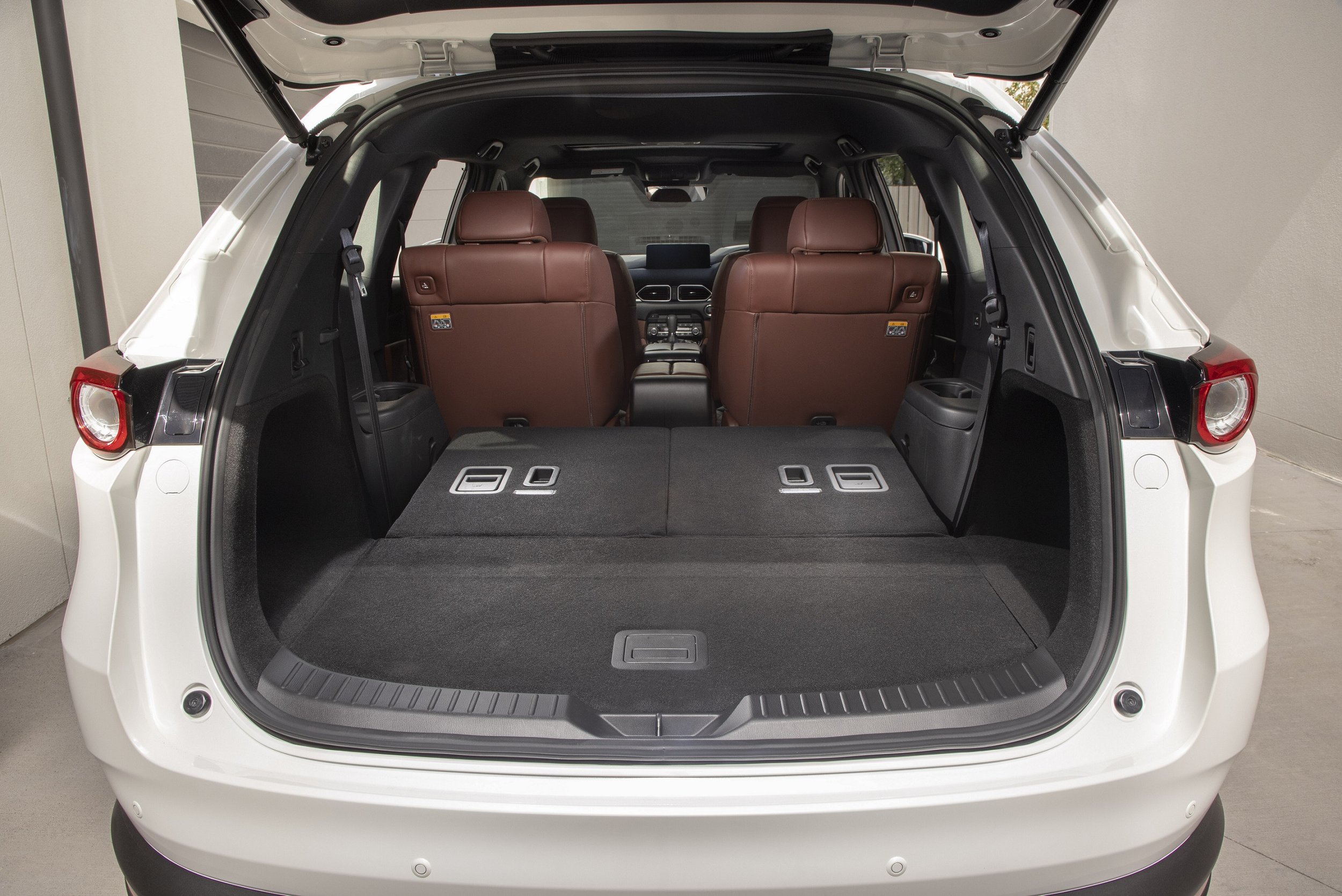Why you should buy a Mazda CX-8 right now
Mazda Australia is getting rid of its overshadowed large SUV due to the brand’s enlightenment with hybrids. Here’s at least one very good reason why you should buy a CX-8 seven-seater before Christmas, if your big family needs a new ride at a bargain price…
Mazda has decided to pursue hybrid-related powertrains in the near future, meaning the current range of combustion-only models is getting the chop - starting with the CX-8.
This is both a blessing and a curse, generally, because it means that not only is Mazda actually innovating (wakey wakey, Nissan, Honda, Subaru), but they’re also having to sacrifice production of one vehicle for the new platform.
Just a few weeks ago Mazda Australia also discontinued selling the diesel version of its CX-5 medium SUV, and along with the underdone MX-30 ‘hybrid’ (if you can call it that), the CX-8 has also gone under the guillotine.
With the arrival of Mazda’s premium German SUV rivals in the CX-60, CX-90 and eventually the CX-80, there’s not enough room, seemingly, for the underrated CX-8 - despite selling over 25,000 units in its six years on sale since 2018. Sales data provided to AutoExpert indicates 37 per cent of CX-8 sales have been the diesel version, making it about 9000 units.
The CX-60, CX-80 and CX-90 will all have combinations of turbo-diesel-hybrid, performance turbo-petrol-hybrid, and 2.5L petrol plug-in hybrid. Meaning the 2.2 diesel is going under the bus, so to speak, along with CX-8 entirely. This is a bit of a shame because the current 2.2 diesel uses less fuel per 100km than the new 3.3-litre petrol hybrid in CX-60.
Having said that, CX-8 is based on an aging generation of Mazdas, and the carmaker is clearly ready to move forward. Can’t blame them for innovating. A new CX-9 and CX-5 are coming in 2024 as well, which is why you should buy these new vehicles before Christmas >>
If this prospect of new hybrid Mazda SUVs excites you, you might like to check out my extensive, honest review of the Mazda CX-60 PHEV here >>
If you’re not-so-keen on a battery-based motoring future, but you do want a good price on a seven-seat SUV with a diesel engine, a massive boot and towing potential, you can keep reading this report and read Why you should buy a diesel Hyundai or Kia seven-seat SUV right now >>
Alas, the CX-8 seemed like something of a gap-filler SUV in Mazda’s line-up between the CX-9 and CX-5, but its five-year tenue in the Australian market is about to end. As of publication, no more new CX-8s will be built and no more orders can be placed.
This means you have exactly two months remaining in 2023 to get your hands on one of the last units off the production line, which will be limited stock in dealerships between now and the end of March, 2024.
Mazda Australia told AutoExpert:
Our final order for CX-8 has been placed… [therefore] new build from factory orders are no longer possible.
However there are ample vehicles available from dealers now with stock continuing to arrive until early 2024
CX-8 currently sells about 400 units per month (actually outselling CX-9 at the moment), which again, according to Mazda Oz, means:
Based on current sales rates, stock is expected to be exhausted by the end of Q1 or early Q2 2024.
This means there are about 1200 CX-8s or fewer left either in dealerships, their holding yards, currently in-transit or en route via shipping. If you want one of these last-run CX-8s, click the red button below…
So what makes the CX-8 such a good vehicle for big family transport duties?
It didn’t really make sense in the beginning. Why would you want a slightly bigger, more expensive CX-5 capable of taking seven, or a slightly smaller CX-9 when the CX-9 is already more than adequate? The key differentiator here was Mazda’s diesel engine, which never made it into the bigger, heavier CX-9, weirdly enough.
So CX-8 can do the roles of both a slightly smaller-profiled CX-5 by being only 107mm longer (that’s 10cm), while having an additional 230mm (23cm) of wheelbase - meaning more interior legroom - and the benefit of a third row of seats.
In other words, CX-8 is effectively the best of both CX-5 and CX-9. It’s a more practical vehicle than the CX-5, but costs 11 per cent less than CX-9 while being able to do the same job.
Mazda also put its 2.2 diesel engine into the smaller CX-8 and not into the bigger CX-9 where it would’ve been be better suited because diesel is naturally 30 per cent more energy dense than petrol. You can’t get the CX-9 with a diesel.
As a result, the CX-9 consumes more fuel, costs more to buy, but simultaneously isn’t as smooth to drive as the diesel which uses roughly 30 per cent less fuel: 6 litres per 100km on the combined lab test cycle, compared with as much as 8.4L in the CX-9 Azami.
The CX-9’s 2.5 turbo-petrol is a powerhouse, but it’s not smooth and linear when you’re accelerating. A CX-8 diesel is ideal for towing and generally sitting at cruising revs for long periods, particularly with weight on board.
Like with any new powertrain or debut model, there are teething issues which good brands get sorted out in-service with minimal disruption. Mazda had an oil dilution issue with very early 2.2 diesel engines which saw a series of service campaigns rectify the issue within the first 18-24 months.
Ever since, the 2.2 diesel has been reliable, economical and fault-free - but even though it hasn’t sold as well as the petrol version, that doesn’t mean it’s inferior. Quite the opposite.
With approximately 1200 CX-8s left to sell, you’re going to have to be particularly quick to get the diesel versions. According to Mazda Australia:
As for diesel, it accounts for under 10% of these orders.
Let’s presume that means about 120 diesel CX-8s remain in stock between now and the end of March 2024. That’s a very small number to spread across a big dealership network like Mazda’s. Point being, make your decision soon if you’re going to get one.
HIGHLIGHTS OF CX-8
Here’s a quick rundown of some of the gear inside a CX-8, as well as some of the inherent benefits of this particular model. You’ll have to deliberate over what features you especially want, but keep in mind there will be limited stock, colours and model grades to choose from given this is a runout model.
So you’ll need to be flexible about exactly which one you end up getting. Colour is usually the first expendable item, followed by kit like heated seats (we live in Australia, the second driest continent on Earth), then powered tailgate, leather seats and so on.
If you can afford the Asaki, you’ll get cooled/ventilated seats, rear retractable sunshades (worth every cent from November to March), Mazda’s okay-but-not-great 360-degree camera system, LED headlights (adaptive, too), and heated seats and steering wheel. Asaki in all-wheel drive is about $73K depending on which engine you get, but you should be able to haggle a good price on the outgoing model - just don’t be too tight or you’ll miss out and it’ll sell to someone else.
CX-8 naturally gets two outboard row 2 ISOFix positions with corresponding top tether points, as well as top tether points in both seats 6 and 7 in row 3. Dual-zone climate control is available on the base model Sport, which is yet another reason this vehicle is such impeccably good value.
If you’re keen to max out the CX-8 budget, you can drop about $75K on the Asaki LE which gets you some properly swanky walnut-brown leather in the front and row 2 seats, the latter of which are captain’s chairs with proper armrests, a dedicated centre console and armrests with corresponding cupholders and climate buttons.
Every model grade from Sport to Asaki already has radar/adaptive cruise control whish is just an absolute win if you’re going to be commuting regularly on freeways in peak hour or on long holiday roadtrips in regional areas. You also get auto emergency braking as standard.
The other reason for opting for the diesel CX-8 is because you get the benefit of an all-wheel drive system, where the petrol version is front-wheel drive only. This drivetrain is the on-demand type, meaning the computer waits to detect wheelspin and then directs drive to the rear to assist.
Now, this is not the same as the permanent all-wheel drive in a Subaru Outback, and nor is it the same as the very active system in a diesel Hyundai Santa Fe or Kia Sorento. It’s a reactionary AWD, not a proactive AWD - think of it that way. Ideally, it’s good for coming across the odd wet but good quality gravel road, perhaps a slippery driveway during a particularly heavy bout of rain, or navigating a dewy, grassy campground on school holidays. It isn’t designed for constant punishment like some off-road 4X4 in the manner of Pajero Sport or Ford Everest.
A QUICK FINAL THOUGHT
It’s quite normalised in the car industry that the newest models are always the best, and typically that’s true in the sense that a reputable carmaker doesn’t survive by making a slightly worse products with each iteration.
But what you rarely hear as a regular consumer, one who has kids and a job and doesn’t swim in the motoring media pool, is that sometimes brands decide to cannibalise models, they discontinue certain features or powertrains, and very rarely they do get rid of a properly good vehicle altogether.
CX-9 was the segment hero for Mazda, it got the flagship moniker, it was advertised quite often over the years and there was the whole Dieselgate problem which tarnished the otherwise robust, economical and powerful nature of the diesel engine in general.
So don’t be mistaken here: diesel engines when engineered properly, are very good at what they do. They’re ideal for moving big vehicles with smooth, linear power delivery. When you’re moving a 1.8 tonne CX-8 full of kids, luggage, maybe a jetski or box trailer on the back, some bikes on the roof and the usual big-family paraphernalia, the diesel engine is the right tool for the job.
But if you can’t get your hands on one while you still can (and while they’re going cheap), the SkyActiv 2.5 turbo-petrol engine is nothing short of a very good example of Mazda’s last 10 years of engine innovation. And most city-bound SUVs are going to be quite capable in front-wheel drive, so don’t be peeved if you miss out on a diesel and be stoked you got a CX-8 before it disappears.
























The Mitsubishi Outlander is an excellent-value seven-seat family vehicle with plenty of features and capability. It looks modern and tough, but you need to know if it’s going to be good enough compared with other medium SUVs.